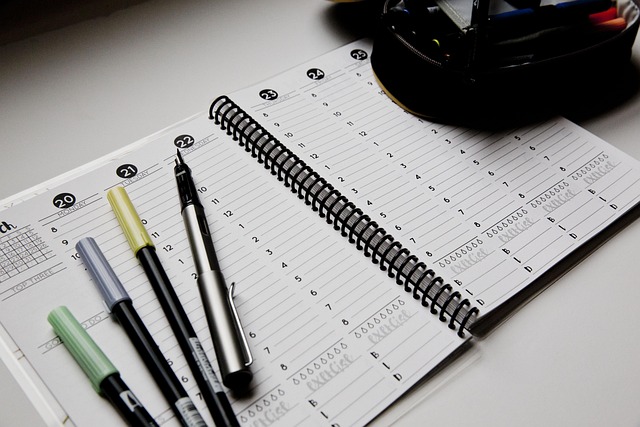What You Should Know Before Applying for Packing Jobs
Packing jobs attract thousands of people seeking stable work and a fresh start in new places. But behind the simple idea of “just packing boxes” lies a range of conditions, expectations, and experiences that vary dramatically from one country to another. Discover what factors make these roles appealing — and what most applicants overlook until they’re already on site.

Packing work sits at the heart of supply chains, ensuring items are prepared, protected, and labeled correctly before they move onward. While job titles vary—picker/packer, fulfillment associate, packer—the core responsibilities include organizing products, checking quality, using barcode scanners, and preparing parcels or pallets. Understanding the daily demands, how conditions change across regions, and the skills that matter will help you make informed decisions before applying.
Global demand for packing jobs
The global demand for packing roles generally tracks with sectors like e-commerce, food processing, pharmaceuticals, and general manufacturing. Online retail growth continues to create steady need for people who can pack accurately and quickly, especially during seasonal peaks. In many regions, employers also scale up short-term positions around holidays and product launches. Automation—such as automated sorters or print-and-apply labelers—reduces repetitive steps but often increases the value of human oversight, quality checks, exception handling, and safe material movement.
Demand can feel different “in your area” depending on the concentration of distribution centers, cold-chain facilities, or factories. Regions with established logistics hubs may offer more consistent openings, while smaller markets can be more seasonal. If you are building a skills base, local services like workforce training centers or community colleges sometimes offer short courses in warehouse safety, inventory systems, or basic logistics to help you prepare for entry-level roles.
Differences in packing job conditions by country
Working conditions are shaped by national labor laws, union presence, and industry norms. In some countries, legislation sets clear limits on weekly hours, overtime rules, night-shift premiums, and required breaks. Elsewhere, staffing models may rely more on temporary contracts with variable scheduling. Health and safety requirements differ too: some jurisdictions mandate specific personal protective equipment (PPE), ergonomic training, and incident reporting systems, while others leave these details to company policy.
Climate also matters. In hotter environments, heat-mitigation plans, hydration stations, and rest breaks can be essential. Cold-chain facilities require thermal clothing, rotation between temperature zones, and procedures to protect hands and feet. Many regions specify weight-lifting guidelines, use of mechanical aids, and training for manual handling to reduce strain injuries. Language requirements can vary; in some workplaces, basic proficiency in the local language is necessary for safety briefings, scanner instructions, and hazard signage.
Documentation standards also differ. Some countries require proof of right to work, background checks, or health screenings for food or pharmaceutical packing. If equipment like pallet jacks or forklifts is part of the role, local certification rules apply. Reviewing official labor authority websites or recognized worker-rights organizations in your country can clarify what protections and obligations are in place.
Skills that make you stand out in packing job
Hiring teams look for a blend of accuracy, safety awareness, and consistent output. The following capabilities tend to matter across sectors:
- Accuracy under time pressure: Packing roles reward reliable picking and labeling without sacrificing quality. Employers often monitor error rates, so demonstrating careful work habits can be valuable.
- Safety mindset and ergonomics: Knowing how to lift, push, and stack safely protects you and co-workers. Familiarity with PPE, lockout/tagout boundaries, and clear walkways signals readiness for a fast-moving floor.
- Tools and systems: Basic comfort with barcode scanners, handheld devices, and warehouse management systems (WMS) is helpful. If you’ve used inventory apps or learned standard picking methods (like batch or zone picking), mention it.
- Communication and teamwork: Coordinating with receiving, inventory control, and shipping keeps orders flowing. Clear updates about shortages, damages, or mislabels prevent delays.
- Physical conditioning: Stamina for standing, walking, and lifting within stated limits is often required. Simple practices—stretching, hydration, and rest—support consistent performance.
- Process improvement: Small ideas that reduce waste, protect fragile items, or streamline packing steps can make a difference. Many workplaces use 5S or similar frameworks to keep stations safe and efficient.
Beyond baseline skills, some credentials can help, depending on the job description and local rules. Examples include first-aid training, manual-handling courses, or certification for equipment where permitted. If your experience comes from home moves, retail stockrooms, or volunteer drives, translate those tasks into concrete outcomes like “prepared 80+ labeled boxes per shift with zero damage reports” to show transferable skills.
Preparing your application also means aligning with the environment you’ll enter. Read the posting carefully for shift patterns (day, swing, night), expected temperature ranges, and performance metrics. Mention availability that fits the listed schedule, and highlight any experience with peak seasons or variable workloads. If training programs are offered in your area, completing short safety or inventory modules can demonstrate initiative.
What to expect on day one typically includes an orientation covering emergency exits, safe lifting techniques, scanner basics, and packing standards for different product types. Quality checks often focus on barcode match, item condition, filler material choice, and weight distribution. In food or pharma contexts, hygiene rules—handwashing, hairnets, clean zones—are strictly defined. Consistently following these basics reduces rework and helps you build trust quickly.
Workplace rights and well-being are essential considerations. Understand break entitlements, reporting channels for injuries or hazards, and how performance is measured. If metrics like units per hour are used, you may receive coaching before formal warnings. Clear communication with a supervisor when workloads spike, equipment malfunctions, or aisles become congested helps keep operations safe and fair. Keep records of any training you complete; it can support internal moves or further study.
Looking ahead, automation will continue to shape packing roles. While some repetitive tasks may decline, new ones emerge around exception handling, equipment monitoring, and quality assurance. Workers who can navigate both physical tasks and digital systems often adapt more easily. Staying current with safety practices and simple data entry or device workflows can make everyday work smoother and position you for future roles within logistics.
In summary, packing work can be a practical entry point into logistics and manufacturing, but it is not identical across companies or countries. Considering the global demand for packing jobs, the differences in packing job conditions by country, and the skills that make you stand out in packing job will help you assess fit, prepare a stronger application, and step into the role with a clear understanding of expectations.




